G2 – Moderate geomagnetic storming due to CH HSS effects combined with CME
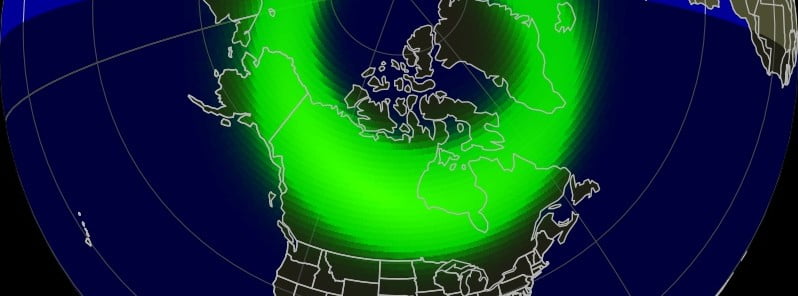
Our planet is under the influence of a positive polarity coronal hole high speed stream (CH HSS) today, March 15, 2023, combined with an impact from the coronal mass ejection (CME) produced on March 10. G2 – Moderate geomagnetic storm threshold was reached at 05:59 UTC and the geomagnetic field is likely to reach G1 – Minor geomagnetic storming levels, with a chance for isolated G2 – Moderate periods on March 15 and 16 due to any flanking effects from CMEs produced on March 11 to 13.
The solar wind environment in 24 hours to 00:30 UTC on March 16 reflected positive polarity CH HSS onset and what is likely transient influence from CME produced on March 10.
The total field peaked at 16 nT near 04:31 UTC on March 14. The Bz component was primarily +/- 11 nT with a few sustained southward deflections of -6 to -8 nT. Phi was positive but became somewhat variable between approximately 07:00 on March 14.
Positive polarity CH HSS influences are expected to continue mostly through March 17.
A CME, likely produced on March 11, impacted Earth at 04:28 UTC on March 15.
Geomagnetic K-index of 6 threshold — G2 – Moderate geomagnetic storm, was reached about an hour and a half later, at 05:59 UTC.
G2 – Moderate geomagnetic storm potential impacts:
Area of impact primarily poleward of 55 degrees Geomagnetic Latitude.
Induced Currents – Power grid fluctuations can occur. High-latitude power systems may experience voltage alarms. Spacecraft – Satellite orientation irregularities may occur; increased drag on low Earth-orbit satellites is possible. Radio – HF (high frequency) radio propagation can fade at higher latitudes. Aurora may be seen as low as New York to Wisconsin to Washington state.
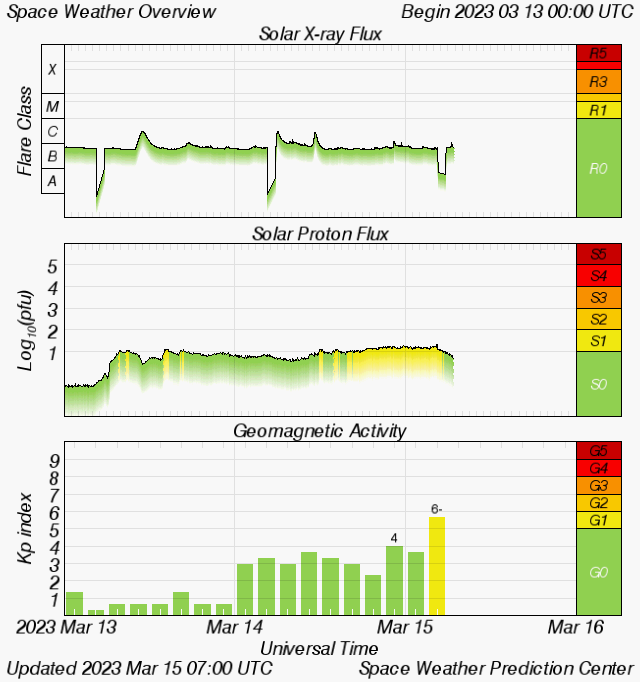
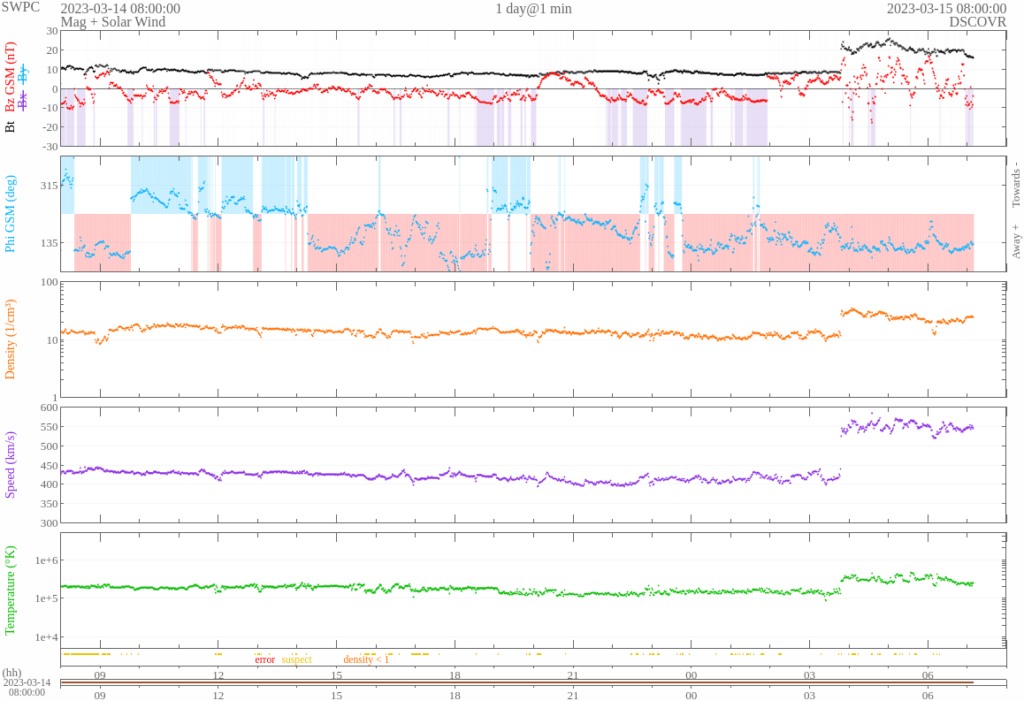
Additional enhancements in the interplanetary magnetic field (IMF) are expected again on March 16 with the periphery of the March 12 and 13 CMEs.
The greater than 10 MeV proton flux remained elevated due to the back-sided full halo CME event from early on March 13 and the likely arrival of one of the flanking CMEs from March 10. The 10 MeV proton flux reached a peak of 17.8 pfu at 22:15 UTC on March 14.
The greater than 10 MeV proton flux is expected to remain at S1 – Minor radiation levels today, and at a chance for an event on March 16. The 10 MeV proton flux is expected to be at background levels on March 17.
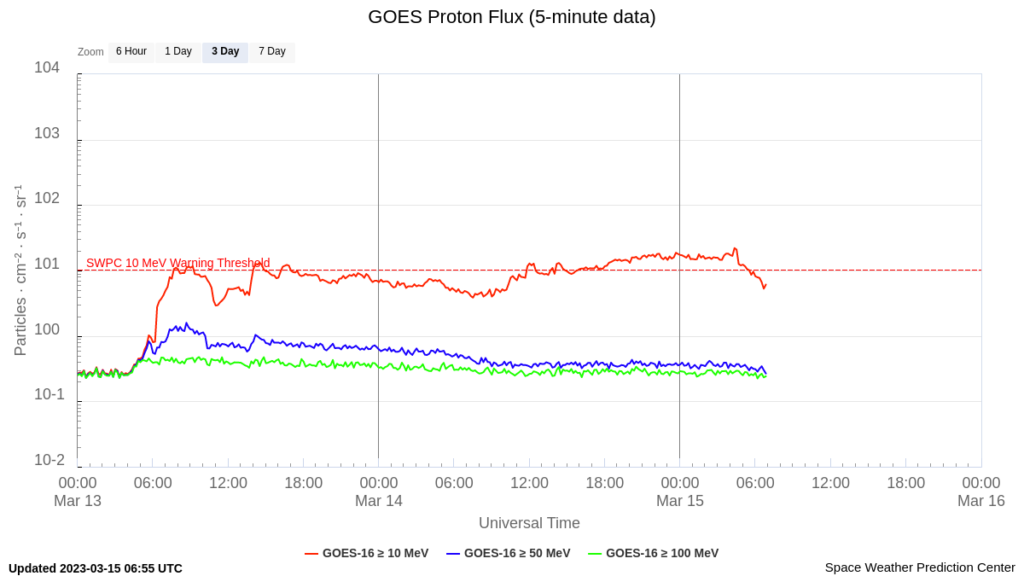
According to the SWPC, the geomagnetic field is likely to reach G1 – Minor geomagnetic storming levels, with a chance for isolated G2 – Moderate periods on March 15 and 16 due to any flanking effects from the CMEs produced from March 11 to 13.
Primarily unsettled conditions are expected to prevail by early March 17 as any lingering positive polarity CH HSS and CME effects wane.
A chance for C-class flares will persist through March 16. C-class flare chances will increase slightly and become likely on March 17 due to the anticipated return of old active regions.
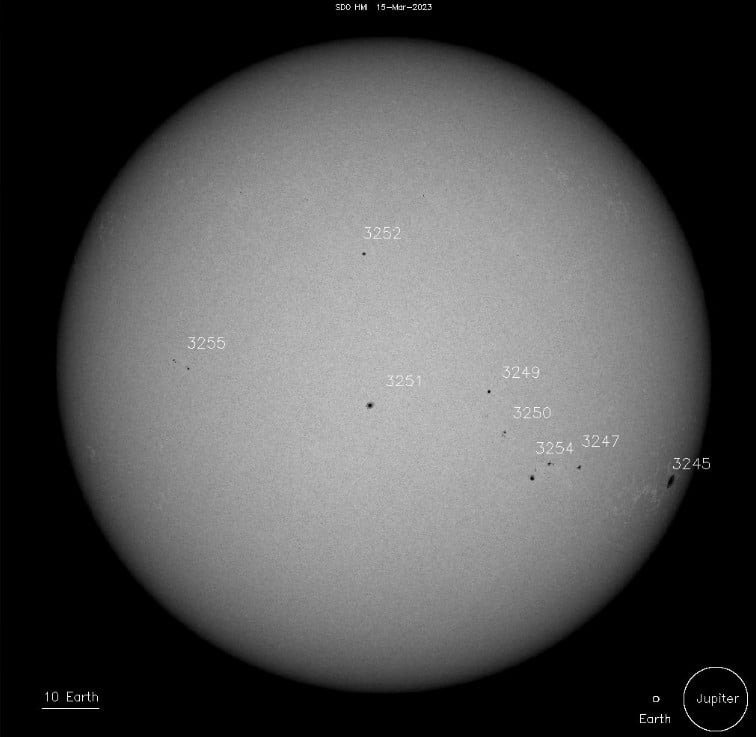
References:
1 Forecast Discussion – Issued: 2023 Mar 15 0030 UTC – Prepared by the U.S. Dept. of Commerce, NOAA, Space Weather Prediction Center
2 S1 – Minor solar radiation storm after full-halo CME associated with solar activity on the far side – The Watchers – March 13, 2023
Featured image credit: SWPC

Commenting rules and guidelines
We value the thoughts and opinions of our readers and welcome healthy discussions on our website. In order to maintain a respectful and positive community, we ask that all commenters follow these rules.